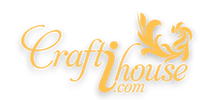Dance Stick: A Symbol of Rhythm and Culture
Dance stick
Dance Stick: A Symbol of Rhythm and Culture
Dancing is an age-old tradition that has been an integral part of human culture for centuries. Across the world, different forms of dance are practiced, each with its unique style, music, and props. One such prop that has gained significant popularity in recent years is the dance stick.
A dance stick, also known as a rhythm stick, is a percussion instrument that is used to keep time with the music. It is a simple wooden stick, usually about 18 inches in length, with a round or flat head. The head of the stick can be made of wood, rubber, or plastic and is often covered with a soft material like felt. The stick can be used to create different sounds by tapping it on various surfaces or against other sticks.
The use of dance sticks can be traced back to many ancient cultures, including the Native American tribes, who used sticks in their ceremonial dances. In many African tribes, dance sticks are used as a symbol of power and are used by the chief or tribal leader to lead the dance. In India, the dandiya sticks are used in the traditional folk dance of Gujarat, where dancers perform intricate steps while holding two sticks in each hand.
Today, dance sticks are widely used in different forms of dance, including traditional folk dances, modern dances, and even in fitness classes. In some dance styles, the use of sticks is an essential element of the dance and is used to enhance the rhythm and visual appeal of the performance.
Apart from adding to the aesthetic appeal of the dance, dance sticks also have several health benefits. Dancing with sticks is an excellent way to improve coordination, balance, and motor skills. The rhythmic movements of the dance also provide a cardiovascular workout, which can improve overall fitness and well-being.
In addition to its cultural and health benefits, dance sticks also serve as a tool for socialization and community building. Dancing with sticks requires cooperation and coordination, which helps build social connections and promote teamwork. In many cultures, dance is also used as a means of celebrating community events and festivals, and dance sticks play a crucial role in these celebrations.
In conclusion, the dance stick is more than just a simple prop. It is a symbol of rhythm, culture, and community, and has been a part of human tradition for centuries. Whether used in traditional folk dances or modern dance styles, dance sticks add a unique element to the performance and offer several health and social benefits. So, the next time you see a dance performance featuring dance sticks, take a moment to appreciate the rich cultural heritage and significance behind this simple wooden stick.
Recent Posts
-
How to Build Your Own Gift Box with Meaningful Pieces
intro: Gift Boxes That Speak from the Heart Gift boxes are everywhere — but most are filled wi …30th May 2025 -
Why Handmade Gifts Make the Best Birthday Surprises
Intro: Make Their Day Unforgettable Birthdays are more than just dates on a calendar — they&rs …30th May 2025 -
Why Handmade Gifts Are the Best Travel Souvenirs
Intro: Travel Souvenirs That Mean More Fridge magnets, plastic camels, and T-shirts with glittery la …30th May 2025



